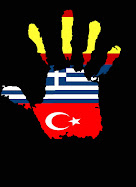Sólo una cosa me quita el sueño: volar.
The day after tomorrow at this time we will be in Izmir in our third meeting. The first took place in Spain, the second in Greece, and now it is time for the third in Turkey.
We are looking forward to meeting you again. We have many materials to share and many ideas to propose. But the best of everything is to open both eyes and pay attention to all the new experiences we are going to discover. New customs, different ways of understanding life, a new language, another culture and religion…Furthermore, the reception promises to be warm and affectionate. We are certain that Güllü and Ozdam, together with the Headmaster and his Deputy Headmaster at the Incirliova High School have prepared a good number of visits and activities. Now it is time for us to take a breath and lots of strength to be able to cope with the schedule, enjoy and take the most of it.
Only one thing will stop the trip from being perfect: the plane, a means of transport which defies the natural laws of physics. Let`s fly for a moment, using our imagination, to the coast of Ephesus: the temple of Artemis, the house of the Virgin Mary, the thermal waters in Pamukkale... How it sounds! The rumour of the Mediterranean waves brings me whispers of the comings and goings of the teachers in Turkey working hard for giving us the best of them. Let’s strengthen our Comenius links!


















